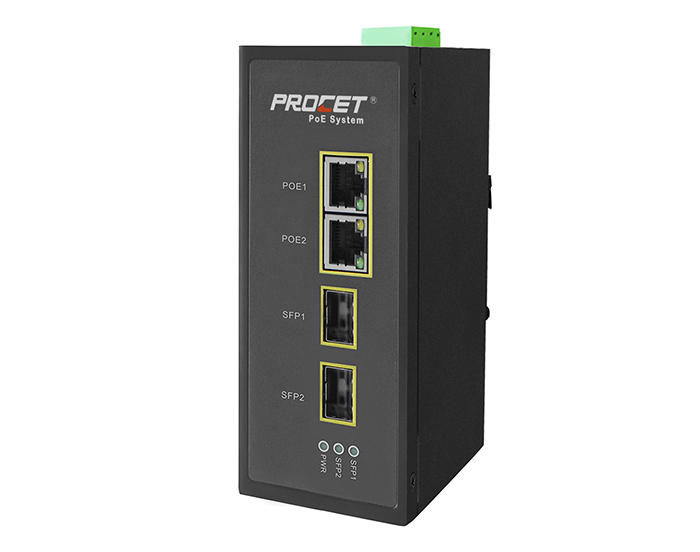Home >> News >> Company News
Industrial PoE manufacturer to share with you: PoE technology refers to IP telephones, wireless LAN access points AP, network cameras, etc. without any changes to the existing Ethernet CAT.5 wiring infrastructure IP terminals transmit data signals while also providing DC powered technology for such devices. The application of PoE technology can ensure the maximum cost reduction under the premise of the existing structured wiring security and the normal operation of the network. It has been widely used in enterprises, industries, communities and other fields. Its common equipment is PoE switches. This article will take you to review the development history of PoE technology and look forward to the future development trend of PoE switches.
First, the history of PoE technology development
Early PoE power supply technology had no norms to follow, until the advent of the IEEE 802.3af standard and the IEEE 802.3at standard, which standardized the PoE technology standard. The development process of PoE technology has the following seven stages:
The first stage: early power supply technology
Use power cords and power outlets to power wireless access point APs, IP surveillance cameras, and other IP devices. Even with the development of PoE technology to this day, many domestic projects still use this backward wiring method.
Phase 2: Fake PoE
The direct current 5V or 12V is transmitted through network cables 4, 5, 7, and 8 to power wireless access point APs, network monitoring cameras, and other IP devices. This method can effectively save costs, but is only suitable for short-distance transmission.
Phase III: Non-standard PoE
Transmit 48V DC power through network cables 1, 2, 3, 6 or 4, 5, 7, 8 and then convert the 48V to 5V and 12V through a transformer to power IP devices such as wireless access point APs and network surveillance cameras. The transmission distance of this method is far longer than the transmission distance of fake PoE.
Fourth stage: IEEE802.3af standard
The IEEE802.3af standard is the IEEE802.3af Standard Carrier Sense Multiple Access / Conflict Detection (CSMA / CD) Medium Access Control Protocol and Physical Layer Specification, which was revised and led by Cisco in June 2003 and issued by the Power over Ethernet Committee Revised version "Power Supply to Powered Terminal Equipment DTE through Media Related Interface (MDI)"). Through network cable 1, 2, 3, 6 or 4, 5, 7, 8 to transmit 48V to the wireless access point AP, network monitoring camera and other IP terminal equipment, to detect and determine whether the PD is a PoE-compatible device, if yes, then classify and It's powered. The 802.3af standard stipulates that the PSE terminal outputs 15.4W, and the PD terminal can obtain 12.95W.
The fifth stage: IEEE802.3at standard
This standard was released in October 2009. It transmits 48V to wireless access point APs, network monitoring cameras and other IP terminal equipment through network cables 1, 2, 3, 6 or 4, 5, 7, 8 to determine the 802.3af or 802.3at standard. For power. The 802.3af standard is backward compatible with the 802.3at standard, stipulating that the PSE end outputs 30W, and the PD end can obtain 25.5W.
Phase 6: IEEE 802.3at 4pairs standard
It transmits 48V to the wireless access point AP, network monitoring camera and other IP terminal equipment through the 8-core network cable, detects and judges whether the PD is a PoE-compatible device, and if so, classifies and supplies power to it. This standard is usually used in special places. The standard stipulates that the PSE terminal outputs 60W, and the PD terminal can obtain 51W.
Stage 7: PoH Standard
With the increasing demand for PoE technology from higher power equipment, the British company Silvertel has released the PoH standard, which allows the use of category 5 and above standard network cables to provide up to 100W of power. This standard transmits 48V to the wireless access point AP, network monitoring camera and other IP terminal equipment through the 8-core network cable. It detects and judges whether the PD is a PoE-compatible device. If so, it classifies and powers it.
Currently, the technical standards of indoor PoE injectors are reflected in IEEE802.3.af and IEEE802.3at, but other higher power standards are also being formulated.

Indoor Poe Injectors